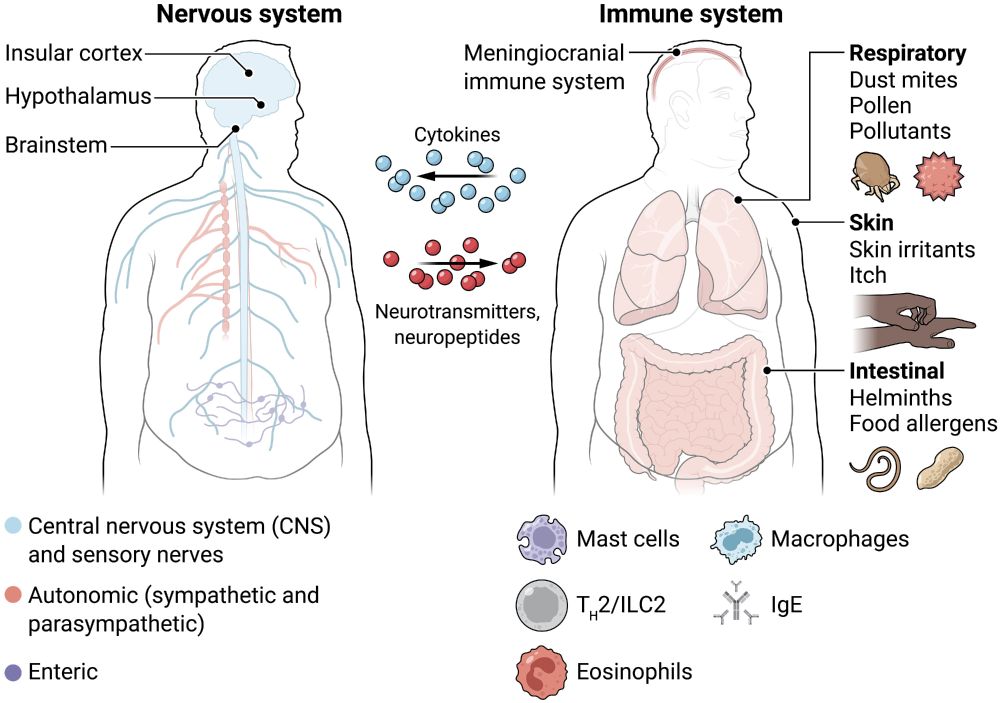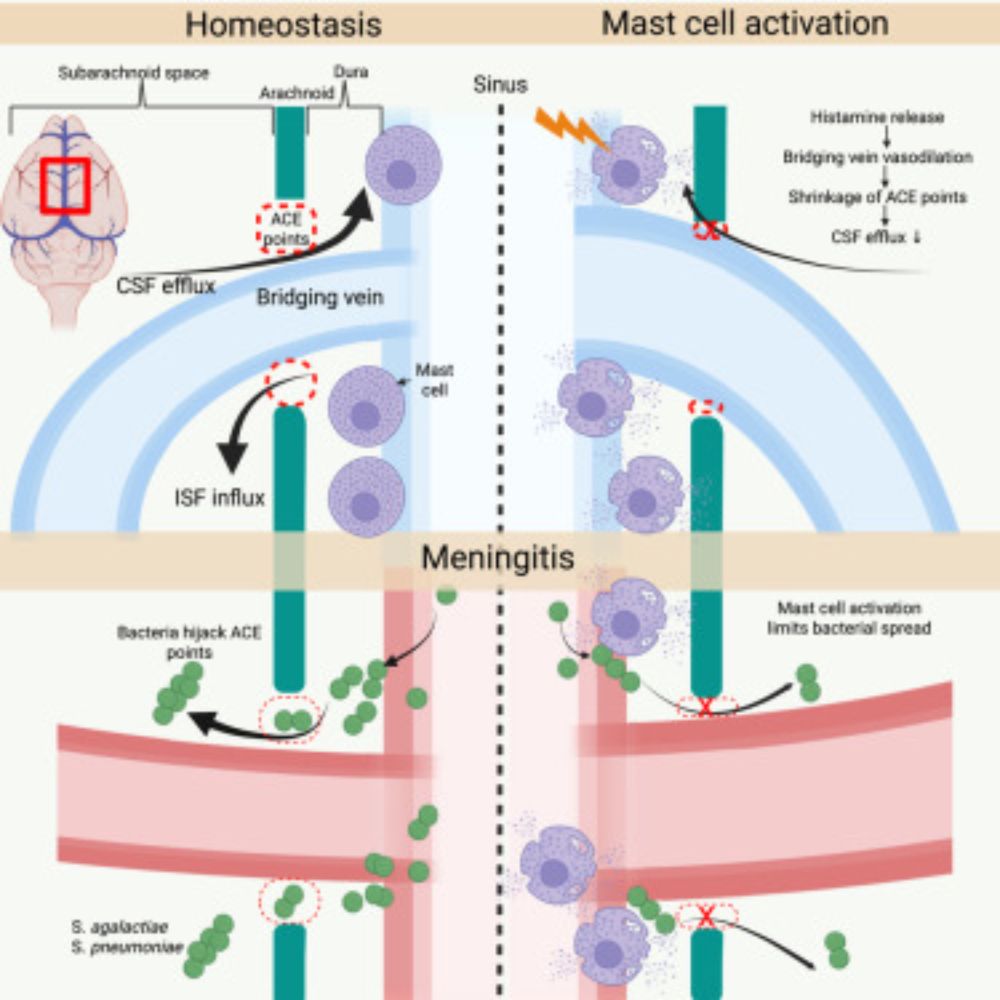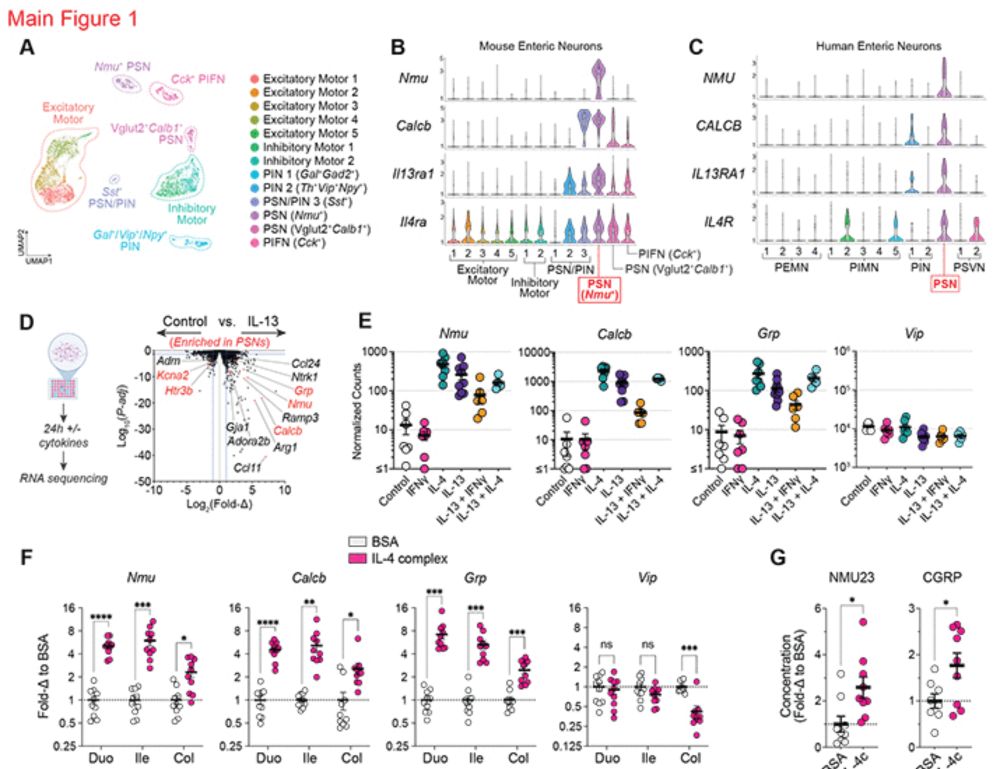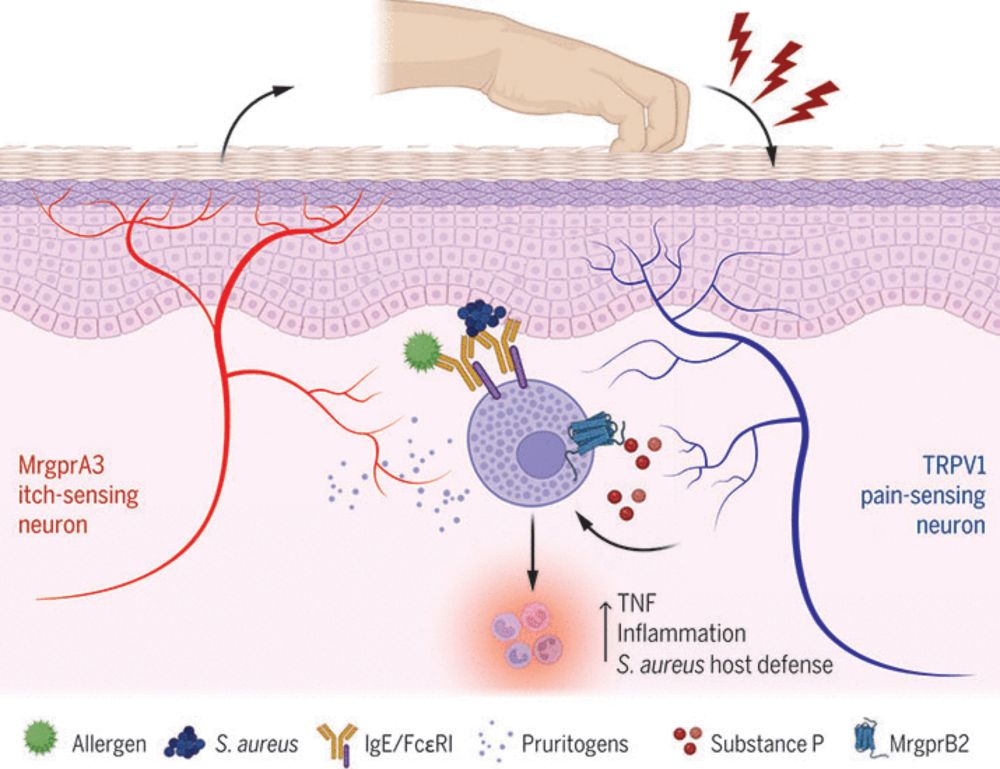
Online now: Long-lived IgE plasma cells that reside in the spleen contribute to the persistence of the IgE response
01.11.2025 14:48 — 👍 4 🔁 2 💬 0 📌 0@plumlab.bsky.social

Online now: Long-lived IgE plasma cells that reside in the spleen contribute to the persistence of the IgE response
01.11.2025 14:48 — 👍 4 🔁 2 💬 0 📌 0
Central neural circuits underlying itch sensation — a Review by Yan-Gang Sun
#neuroscience #neuroskyence
www.nature.com/articles/s41...
congrats Katharina!
22.10.2025 08:23 — 👍 1 🔁 0 💬 0 📌 0Another piece of the puzzle pointing towards the existence of a continuum of host defenses. Classical immunology (search and destroy) and neural protective reflexes/anticipatory reactions go hand in hand to maintain health. Exciting times to study neuroimmunology!
06.09.2025 15:28 — 👍 1 🔁 1 💬 0 📌 0
Nature research paper: Maternal stress triggers early-life eczema through fetal mast cell programming
go.nature.com/3UPz8Vm

The causes of early-life eczema have been unclear, but evidence indicates that changes to fetal immune cells and sensory neurons during pregnancy play a key part
go.nature.com/45Y9aUQ

The sneezing, itchy eyes and coughing elicited by some allergens are caused by proteins creating holes in airway cells.
go.nature.com/3H9B1cd

A graphic showing that interactions between the nervous system and type 2 immunity occur across multiple organs depending on the context of allergic triggers or injury.
In a recent #ScienceImmunology Review, researchers discuss how interactions between the nervous and immune systems could impact neurological disorders and allergy-related behaviors like food avoidance.
Learn more: scim.ag/4mpgzE5

Excited to share our new work, led by an exceptional graduate student, Tornike Mamuladze, on the role of meningeal mast cells in regulation of brain/dura access points, with implications to CSF flow dynamics and meningitis || www.cell.com/cell/fulltex...
24.07.2025 20:10 — 👍 14 🔁 6 💬 0 📌 0
A speedy imaging method can map the nerves running from a mouse’s brain and spinal cord to the rest of its body at micrometre-scale resolution
go.nature.com/3Il0e3x

Forum @cp-trendsimmuno.bsky.social
Neuro–immune crosstalk: focus on innate lymphoid cells
www.cell.com/trends/immun...

Online now: DOCK8 in T cells promotes Th17 and Treg cell functionality to restrain mucosal mast cells and limit susceptibility to oral anaphylaxis
25.06.2025 19:56 — 👍 4 🔁 2 💬 0 📌 0Time is running out to register for the AAI Introductory Course in Immunology! Generous (1k) travel grants available! www.surveymonkey.com/r/intro25fun...
Join me and other expert faculty in LA from July 8-13. I will be lecturing on my favorite topic: Type 2 immunity! www.aai.org/Education/Co....

🚨New paper with @thexavierlab.bsky.social @science.org on the critical role of 🔄neuroimmune crosstalk in immune defense in the gut🪱🪱.
🧪@genelayinstitute.bsky.social @mgbresearch.bsky.social @harvardmed.bsky.social @broadinstitute.org
www.science.org/doi/10.1126/...

The nervous system comprises the CNS and associated sensory nerves (blue) and the autonomic nervous system, which includes sympathetic and parasympathetic nerves (red) and the ENS (purple). The immune system is composed of cells that span the entire body. This includes the meningiocranial immune system, which comprises immune cells important for neural development, brain repair, and brain border protection. Repeated exposure to allergens at mucosal sites (for example, lung, skin, and gut) can trigger local type 2 immunity. Type 2 immune cells signal to neurons across the periphery and brain through cytokines, whereas neurons signal to immune cells via neurotransmitters and neuropeptides. This is not an exhaustive list of cellular players, given that other tissue resident cells (e.g., fibroblasts and glial cells) may also respond to these signals.
In a new #ScienceImmunology Review, researchers discuss how interactions between the nervous and immune systems could impact neurological disorders and allergy-related behaviors like food avoidance. scim.ag/4mpgzE5
22.05.2025 20:38 — 👍 64 🔁 13 💬 2 📌 3
Review @sciimmunology.bsky.social @arimolofskylab.bsky.social @annamolofskylab.bsky.social @nickmroz.bsky.social @phagocyticpai.bsky.social
The nervous and type 2 immune systems regulate each other via cytokines and neurotransmitters
www.science.org/doi/10.1126/...

The CS: Neuro-immune axis: Charting the periphery #CSNeuroimmune25 abstract deadline has been extended until May 23. @cp-neuron.bsky.social @cp-immunity.bsky.social @alleninstitute.org, Sept 7–9, 2025. hubs.li/Q03lPtw90
12.05.2025 17:12 — 👍 2 🔁 2 💬 0 📌 0
Scratching a mosquito bite can offer a moment of bliss, and now scientists have learnt why: scratching activates an immune response that helps to protect the skin against harmful infections, at least in mice.
https://go.nature.com/4aJpL0r

Why scratching makes a rash worse and a potential benefit to scratching--it reduced S. aureus on skin. Andrew Liu's paper from our lab is out now at #science #neuroimmune #immunology www.science.org/doi/10.1126/...
30.01.2025 20:31 — 👍 191 🔁 57 💬 7 📌 8Congrats Dan and Andrew!
30.01.2025 21:25 — 👍 1 🔁 0 💬 0 📌 0
Happy to share our latest review, 'Beyond classical immunity: Mast cells as signal converters between tissues and neurons'. Mast cells finally emerge as important mediators of neuro-immune communication and host-protective behavior! 🔗 tinyurl.com/3f7eufsm
10.12.2024 17:28 — 👍 1 🔁 0 💬 0 📌 0Let’s talk about the fascinating future of mast cells—drop your thoughts below! 👇
10.12.2024 16:05 — 👍 0 🔁 0 💬 0 📌 0💡 Future directions? Understanding mechanisms of mast cell-modulated behaviors by identification of specific mediators and neural pathways downstream of mast cells.
10.12.2024 16:05 — 👍 0 🔁 0 💬 1 📌 0Reflexive behaviors such as avoidance, itch, nausea, and sneezing protect against intoxication, inflammation, and tissue damage, representing a form of non-classical immunological defense.
10.12.2024 16:05 — 👍 0 🔁 0 💬 1 📌 0🔑 Key insights:
Mast cells don’t just fight parasites or drive allergic pathology; they detect antigens, stress, tissue damage, and inflammation and act as signal converters, translating antigen and tissue cues into organ-specific reflexes via neuronal activation.
Excited to join BlueSky! 🌌 We study the interactions between mast cells and neurons, focusing on how they drive behaviors like itch, cough, and sneezing. Follow along for updates on our research and discoveries here and on our twitter x.com/Plum_immunol...! 🧬✨
24.11.2024 20:55 — 👍 0 🔁 0 💬 0 📌 0